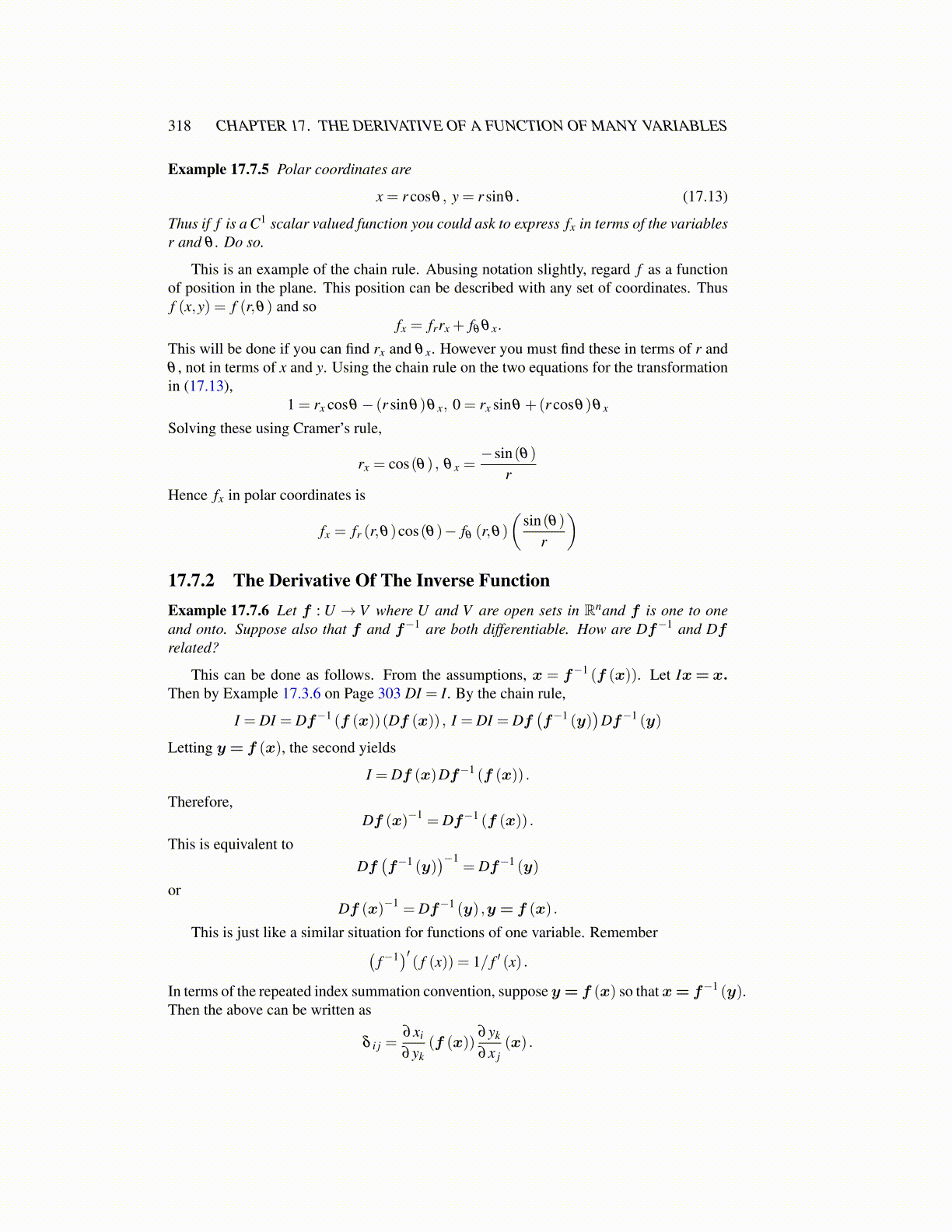
318 CHAPTER 17. THE DERIVATIVE OF A FUNCTION OF MANY VARIABLES
Example 17.7.5 Polar coordinates are
x = r cosθ , y = r sinθ . (17.13)
Thus if f is a C1 scalar valued function you could ask to express fx in terms of the variablesr and θ . Do so.
This is an example of the chain rule. Abusing notation slightly, regard f as a functionof position in the plane. This position can be described with any set of coordinates. Thusf (x,y) = f (r,θ) and so
fx = frrx + fθ θ x.
This will be done if you can find rx and θ x. However you must find these in terms of r andθ , not in terms of x and y. Using the chain rule on the two equations for the transformationin (17.13),
1 = rx cosθ − (r sinθ)θ x, 0 = rx sinθ +(r cosθ)θ x
Solving these using Cramer’s rule,
rx = cos(θ) , θ x =−sin(θ)
rHence fx in polar coordinates is
fx = fr (r,θ)cos(θ)− fθ (r,θ)(
sin(θ)r
)
17.7.2 The Derivative Of The Inverse FunctionExample 17.7.6 Let f : U → V where U and V are open sets in Rnand f is one to oneand onto. Suppose also that f and f−1 are both differentiable. How are Df−1 and Dfrelated?
This can be done as follows. From the assumptions, x = f−1 (f (x)). Let Ix= x.Then by Example 17.3.6 on Page 303 DI = I. By the chain rule,
I = DI = Df−1 (f (x))(Df (x)) , I = DI = Df(f−1 (y)
)Df−1 (y)
Letting y = f (x), the second yields
I = Df (x)Df−1 (f (x)) .
Therefore,Df (x)−1 = Df−1 (f (x)) .
This is equivalent toDf(f−1 (y)
)−1= Df−1 (y)
orDf (x)−1 = Df−1 (y) ,y = f (x) .
This is just like a similar situation for functions of one variable. Remember(f−1)′ ( f (x)) = 1/ f ′ (x) .
In terms of the repeated index summation convention, suppose y = f (x) so that x= f−1 (y).Then the above can be written as
δ i j =∂xi
∂yk(f (x))
∂yk
∂x j(x) .